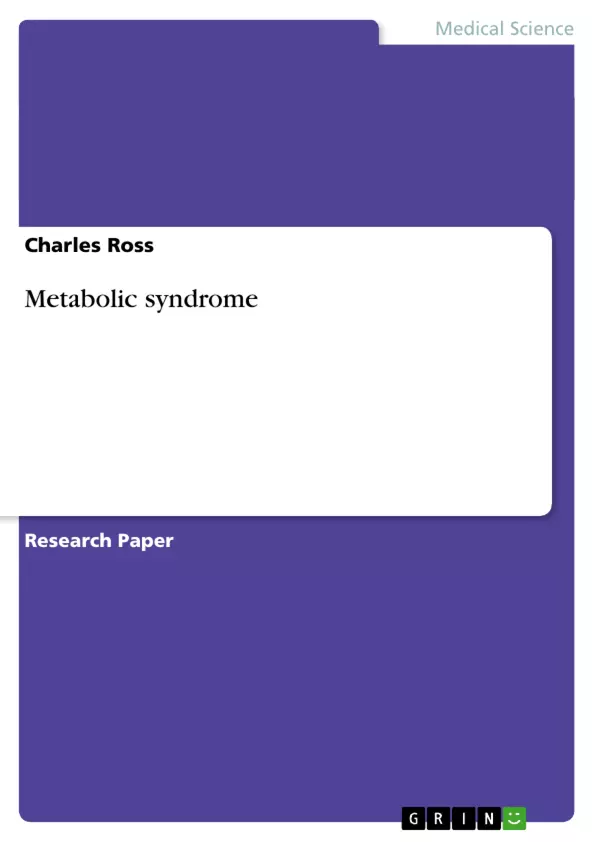Formerly known as Problem X or Blood insulin Proof Problem, Metabolic syndrome is a number of metabolic risks, which can lead to one having high chance of creating heart problems, heart stroke, side-line general illness, and type-2 diabetic issues (Hurst pg. 86,2010. Detecting metabolic syndrome is a process that has been the middle of questionable conversation by Healthcare groups such as the World Health Organization (WHO), and other physicians. Conversations such as analytic requirements and therapy continue to cause warmed controversy due to the complexness of the actual cause of the differential analysis, but insulin level of resistance and being overweight are considered key elements (Calhoun, pg.90, 2011). In 1999, the World Health Organization described metabolic syndrome as, insulin level of resistance, sugar intolerance or incapacity, and being overweight. Later, in 2006, the Western Team for the Research of Blood insulin Resistance described metabolic syndrome by using going on a fast blood sugar stages to determine insulin level of resistance and provided factors for high blood pressure, triglyceride stages, HDL-C stages, and central being overweight by calculating hips area. In more recent reports, cultural background and genes play an essential part for the analysis of metabolic syndrome (Weiss, pg. 87, 2012). Another study conducted by the National Cholesterol Education Program Third Adult Treatment Board modified in 2005, set five specific requirements and cutoffs than previously described (Byrne, pg97, 2011). Healthcare experts nationwide use this standard as a basis to identify a person with metabolic syndrome if three of the five requirements are met
Inhaltsverzeichnis (Table of Contents)
- CHAPTER 1
- Introduction
- Fat
- History
Zielsetzung und Themenschwerpunkte (Objectives and Key Themes)
This project aims to assess the role of metabolic syndrome diagnosis on healthcare usage, specifically focusing on the annual number of hospitalizations and doctor visits. It analyzes data from the Third National Health and Nutrition Examination Survey dataset to determine the impact of metabolic syndrome on healthcare utilization while accounting for factors such as age, race, and gender.
- Metabolic Syndrome and Cardiovascular Disease
- The Impact of Metabolic Syndrome on Healthcare Utilization
- The Role of Age, Race, and Gender in Healthcare Utilization
- The Connection between Metabolic Syndrome and Obesity
- The Importance of Lifestyle Modifications in Managing Metabolic Syndrome
Zusammenfassung der Kapitel (Chapter Summaries)
Chapter 1 explores the concept of metabolic syndrome as a group of cardio-metabolic risk factors linked to increased risk of cardiovascular disease and type 2 diabetes mellitus. It delves into the historical background of the syndrome, tracing its development from the 1950s to the present, highlighting key discoveries and observations made by various researchers. The chapter also discusses the prevalence of metabolic syndrome in the United States and its association with lifestyle factors such as diet, exercise, and age.
Schlüsselwörter (Keywords)
Metabolic syndrome, cardiovascular disease, type 2 diabetes, obesity, healthcare utilization, hospitalizations, doctor visits, age, race, gender, lifestyle modifications.
- Citar trabajo
- Charles Ross (Autor), 2010, Metabolic syndrome, Múnich, GRIN Verlag, https://www.grin.com/document/269787



